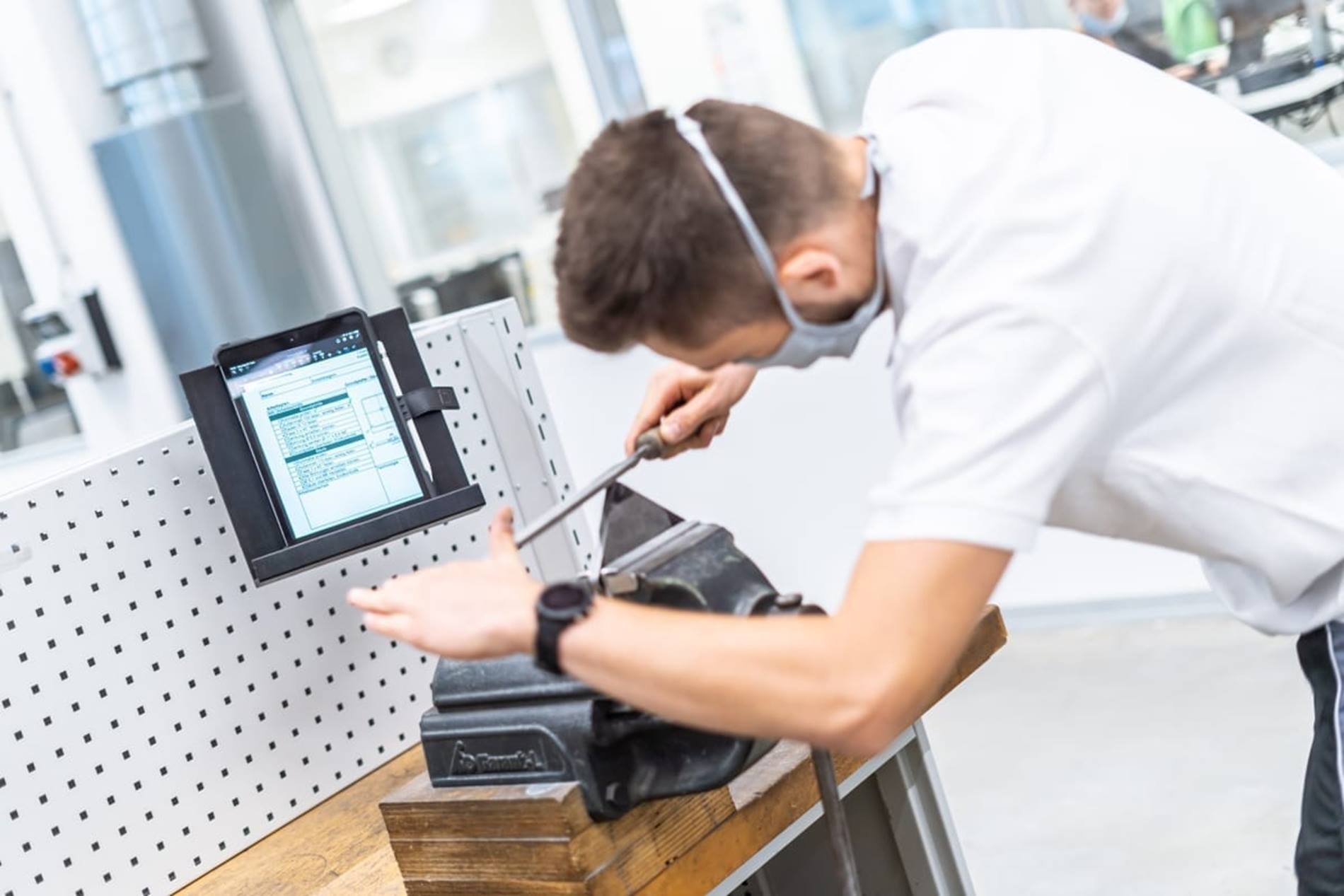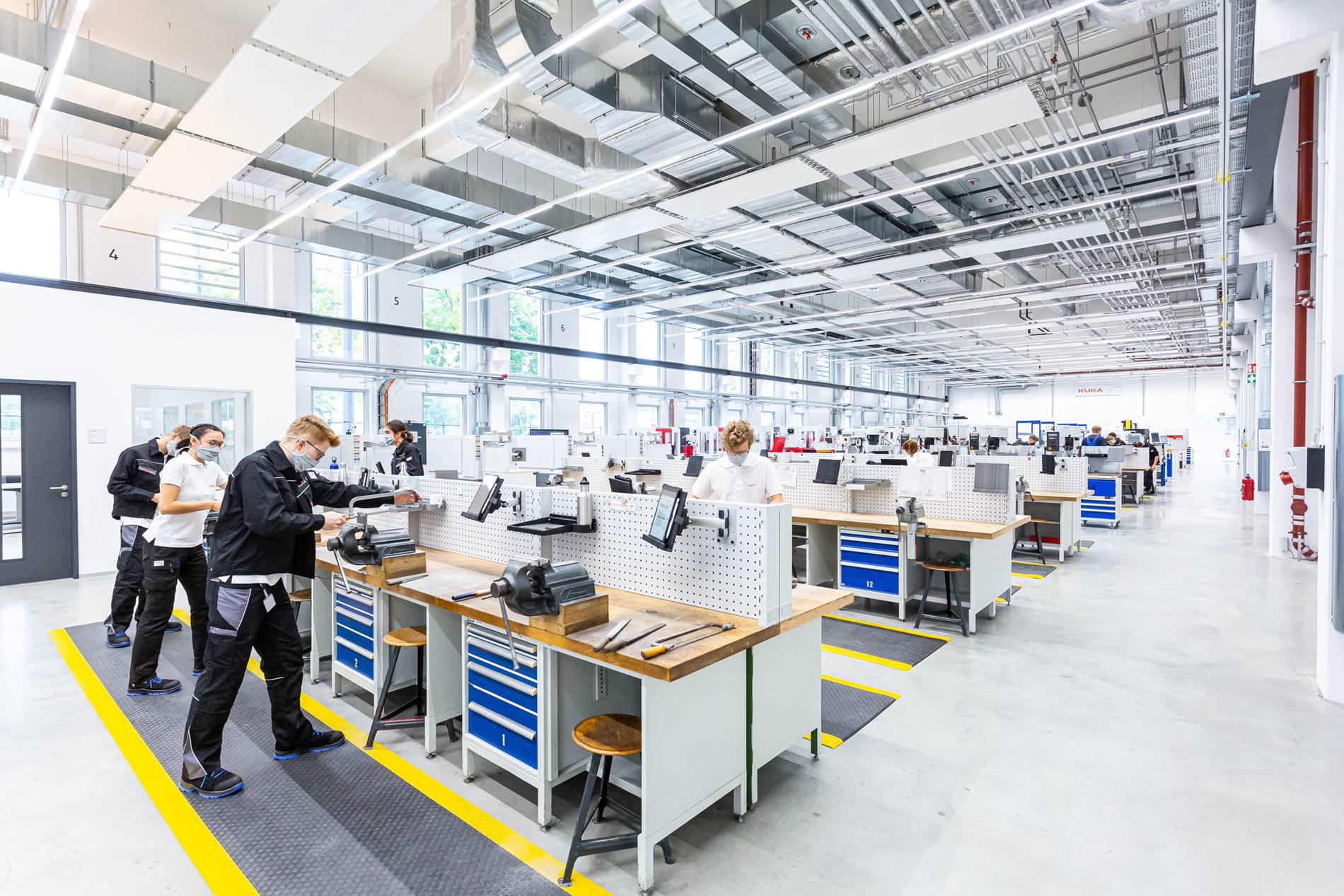Programming miniature plants
Henry walks through the recreation room of the new training center, which, including the training workshop, was not officially opened until September 2020. The gray upholstered seating areas are still empty, but in just half an hour the new apprentices will be spending their break here. One door down is an IT training room. Pictures of robots hang on the wall, and small transport robots with controllers stand around. Since the building opened, Henry has already spent a lot of time there, programming controllers for miniature plants, for example. “We always have theory sessions in between, too, and put that directly into practice.” Cables and wires in a wide variety of colors protrude from a small setup, and a mini conveyor belt moves. In this way, the students simulate the systems that are found, for example, in large automotive companies in factory halls. The whole thing is controlled by computer.














